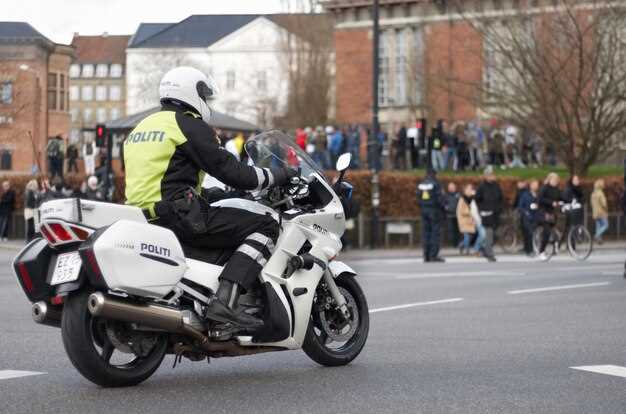
When it comes to enjoying the open road, there’s nothing quite like the camaraderie of riding with fellow bikers. However, riding in a group requires a unique set of skills and awareness to ensure the safety of all participants. Understanding group rules is essential to maintaining harmony and avoiding accidents during your journey.
In this article, we will explore the key safety practices every biker should follow when riding in a group. From communication techniques to proper formation positioning, these best practices are designed to enhance both rider safety and the overall riding experience. By adhering to these guidelines, riders can foster a sense of community while minimizing risks on the road.
Moreover, group dynamics can sometimes lead to distractions or misunderstandings. Therefore, it’s imperative that each biker takes personal responsibility and remains vigilant. By collectively embracing the rules of group riding, bikers can create a safer environment that allows everyone to enjoy the thrilling experience of navigating the open road together.
Pre-Ride Briefing: Key Points Every Group Should Cover
Before hitting the road, a pre-ride briefing is essential for ensuring that all bikers in the group are on the same page. This discussion sets the tone for a safe and enjoyable ride. Here are the critical points that should be addressed during the briefing:
1. Group Formation: Establish the riding formation that the group will maintain, whether it be staggered or single file. Explain how this arrangement aids visibility and safety, allowing bikers to be more aware of their surroundings.
2. Hand Signals: Clearly communicate the hand signals that will be used throughout the ride. This includes signals for stopping, turning, or slowing down. Ensuring every biker understands these gestures can prevent confusion and accidents.
3. Route Overview: Provide a summary of the planned route, including any key landmarks or rest stops. Highlight any challenging sections to prepare riders for potential hazards. This information helps bikers to mentally map out the ride and plan accordingly.
4. Speed Limits and Rules: Discuss the group’s agreed-upon speed limits and the importance of adhering to traffic laws. Remind bikers to maintain a safe distance from one another to allow for unexpected stops or changes in traffic conditions.
5. Communication Methods: Establish how the group will communicate during the ride. Whether using CB radios, intercoms, or smartphone apps, ensuring everyone knows the chosen method is vital for responding to emergencies or changes in plans.
6. Riding Etiquette: Emphasize the importance of respecting fellow bikers and other road users. Encourage riders to stay aware of their surroundings, avoid distractions, and remain courteous at all times.
7. Emergency Procedures: Discuss the protocol for handling emergencies. This includes what to do in case of a breakdown, accident, or injury, and identifying a designated person to lead the group in such situations.
By covering these points in the pre-ride briefing, every biker will have a clear understanding of the expectations and rules, ensuring a safer and more cohesive group riding experience.
Maintaining Proper Formation: Tips for Staying Aligned on the Road

Maintaining proper formation while riding in a group is crucial for the safety of all bikers involved. Group riding comes with its own set of rules that ensure everyone can enjoy the ride without unnecessary risks. Following these guidelines helps create a more controlled and cohesive experience on the road.
Firstly, establish a clear riding formation before hitting the road. The staggered formation is often recommended, as it allows sufficient space between bikers and increases visibility. Keeping a consistent distance is vital; instructors suggest maintaining a gap of about two seconds between riders. This spacing provides ample time to react to sudden stops or obstacles.
Attention to lane positioning is also essential. The lead rider should ideally stay in the left portion of the lane, while the second rider occupies the right portion. This alignment not only enhances visibility for all bikers but also provides an escape route if needed. Additionally, riders should avoid excessive zigzagging or swerving, as it can disrupt the formation and lead to accidents.
Communication within the group is key to staying aligned. Hand signals are vital for indicating turns, stops, or hazards on the road. Riders should familiarize themselves with common signals before the ride begins. Verbal communication can also be helpful during brief stops or regrouping moments, so ensuring everyone can hear and understand each other is important.
Lastly, it is important for each biker to remain aware of their surroundings. Riders should keep an eye on both the motorcycles ahead and behind them, as well as any changes in the road or traffic conditions. Regularly checking mirrors and maintaining focus will help in preserving the group’s formation and prevent unexpected situations.
Emergency Protocols: Steps to Follow During a Ride Incident

In the unfortunate event of an incident during a group ride, it’s crucial for bikers to remain calm and follow established emergency protocols. Here are essential steps to ensure safety and effective response:
- Stop and Secure the Scene
- Immediately pull over to a safe location to prevent further accidents.
- Turn on hazard lights to alert other riders and vehicles.
- Check for Injuries
- Assess yourself and other group members for any injuries.
- Do not attempt to move injured individuals unless there’s immediate danger.
- Call for Help
- Contact emergency services, providing them with clear and accurate information about the situation.
- Designate a group member as the contact for first responders.
- Communicate with the Group
- Once safe, inform all riders about the incident and gather as a group.
- Discuss next steps and confirm everyone’s condition.
- Document the Incident
- Take notes and photos of the scene, if possible, for insurance and legal purposes.
- Exchange information with any involved parties, including witnesses.
- Follow Up
- Ensure all riders understand how to contact emergency services or next of kin if necessary.
- Connect with group members post-incident to discuss their experiences and agree on further safety measures.
By adhering to these rules, bikers can enhance their group riding experience while prioritizing safety and preparedness for any unfortunate events that may arise during a ride.
